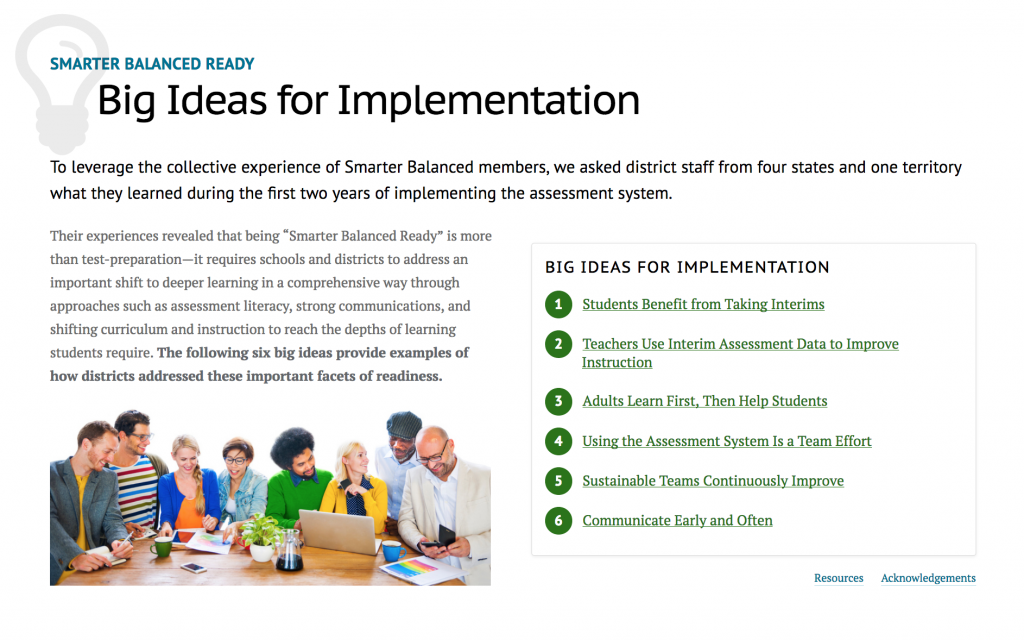Six Big Ideas for Getting “Smarter Balanced Ready”
In 2015, the first year Smarter Balanced tests were given in Washington state, staff from Vancouver Public Schools wanted to help parents better understand the new tests their students would be taking. During parent-teacher nights, the teachers gave online practice tests to parents. They found that not only did parents enjoy the experience, but they also understood the testing experience, “like a light bulb went off!” Parents analyzed questions, found evidence to support their answers, and in the end, lowered their anxiety about the new tests.

This story is just one example of the many great ideas from school districts in Smarter Balanced states and territories on how they implemented the Smarter Balanced assessment system. We collected stories on what worked well for specific school districts and created a new resource called, Smarter Balanced Ready: Big Ideas for Implementation.
More than Test Prep
We found that becoming “Smarter Balanced Ready” is about more than test preparation. Implementing the Smarter Balanced assessment system includes teaching parents and educators about how assessments work, communicating early and regularly about testing, and shifting curriculum and instruction to reach the depths of learning students require.
By looking at the strategies used by school districts in California, Connecticut, Idaho, Washington, West Virginia, and the U.S. Virgin Islands, we found six “big ideas” for getting Smarter Balanced Ready:
- Students Benefit from Taking Interim Assessments
- Teachers Use Interim Assessment Data to Improve Instruction
- Adults Learn First, Then Help Students
- Using the Assessment System Is a Team Effort
- Sustainable Teams Continuously Improve
- Communicate Early and Often
We’ve organized these ideas into a series of web pages so educators across the country can get ideas and access resources—created and used by other Smarter Balanced districts—to help with their own implementation efforts.
